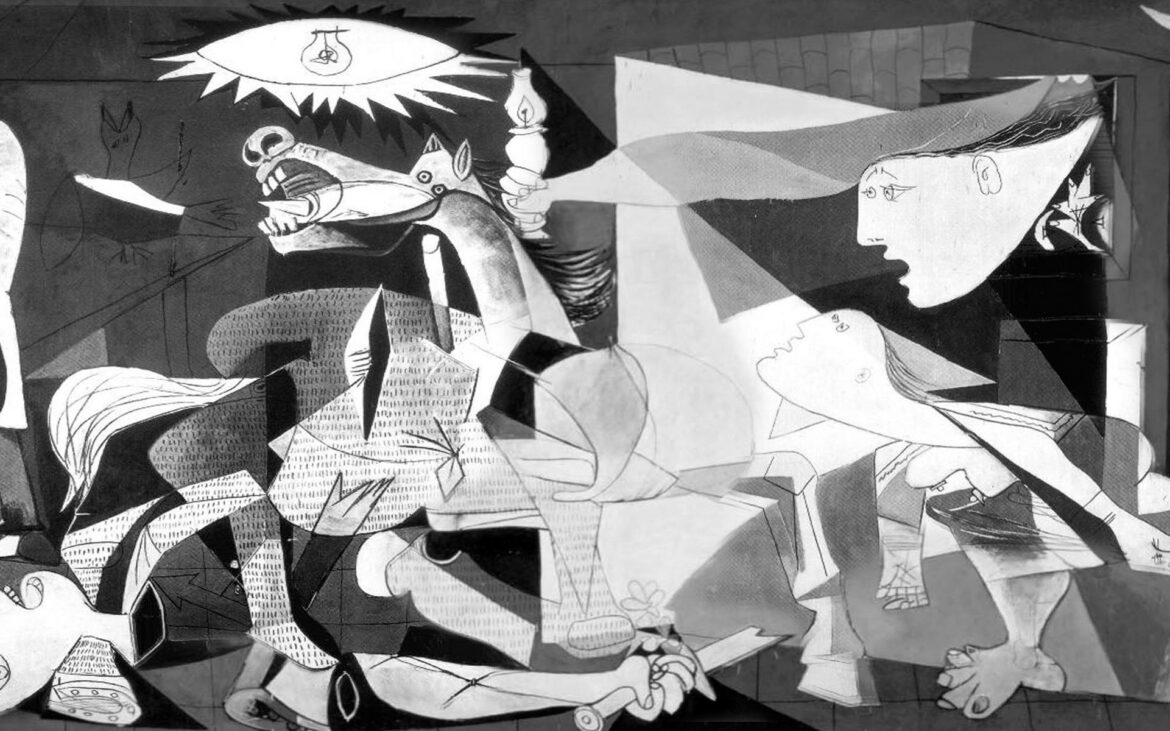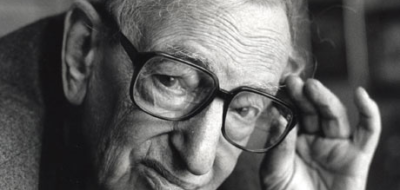As art went from baroque to cubism, it is natural to not understand what the painting is about at all. In the following step by step guide I will try to make the process of understanding a Picasso painting easier, using Guernica as an example.

Step 1: First impression. What do you feel the first second this painting enters your sight? What effect do the colors produce on you? For me, that would be a general sense of instability and chaos. The main colors are white and shades of grey. However, there is a constant and sharp transition between the colors which makes the painting seem uneasy and in a state of action.
Step 2: Center of attention. This is an easy one: the point where the painter tries to focus attention is either where the most bright colors are, or at the literal center of the picture. In this case, the painting is almost monochromatic, so we look at the center; and there we see a horse screaming. It is pain and fear that we see there. Right above that horse’s head is a lamp. As far as I know, horses are not supposed to be in living rooms. Why is it there? Why is it scared? We should look for the answers in the next step.
Step 3: Identifying objects. Now we should look closer at the shapes around the central figure in order to try to answer the questions about the context. To the right of the horse are too human faces. One of them is shocked and the other one seems to be panicking. There are also feet and arms that seem to be out of proportion and not to be connected to any particular body. That is probably used by the artist to emphasize the motion – running. Below the horse is a wounded arm with a broken sword and a human face. That face has its mouth open and expressionless eyes; it is dead. To the left, there is another human figure. It is clearly a woman holding a dead child (because children tend to wake up around screaming people and horses). And then there is a confused ox which, as it was with a horse, does not belong in the living room under normal conditions.
Step 4: Historical context. So there are people screaming and walls broken. A sword in a dead man’s hand tells us that it might be war, a sudden attack. Indeed, in this painting Picasso depicts the bombing of the city of Guernica during the Spanish Civil War. Guernica is a mural-sized protest that Picasso painted in a creative rush.
These steps, I believe, can help anyone in understanding cubism. In this genre, historical background is as important as the provoked feelings after the first impression; they mutually fulfill each other and add a picture beyond the picture. Pablo Picasso is a master storyteller for the ones who are willing to see.
Sources:
edition.cnn.com/style/article/intelligence-squared-is-art-for-pleasure-or-politics/index.html






